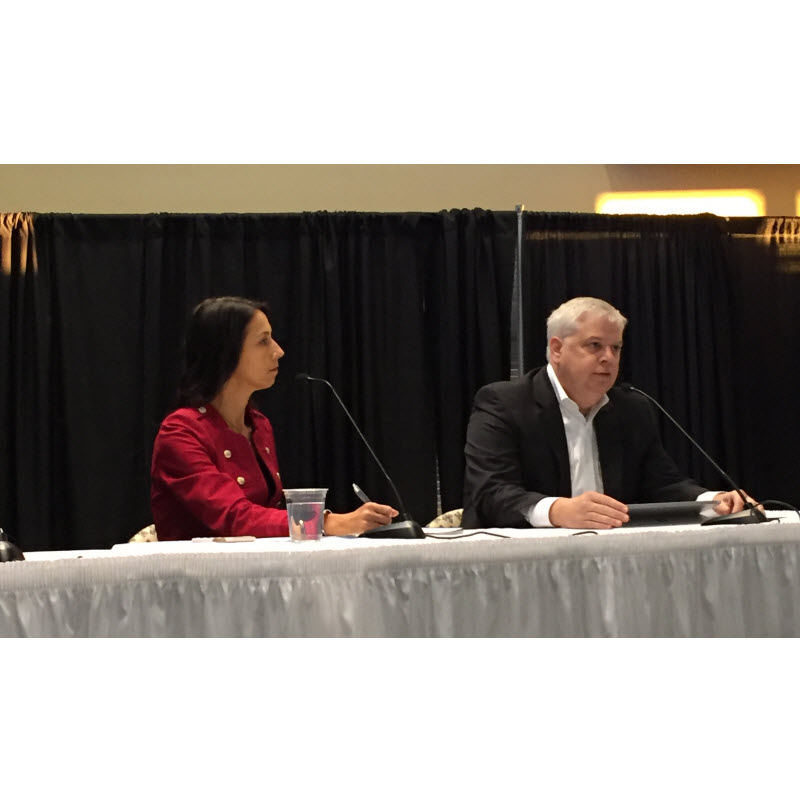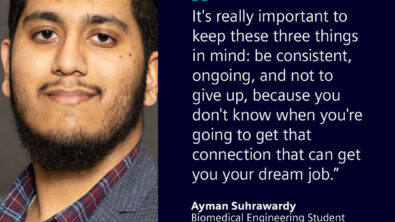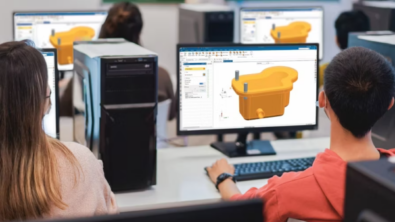Business leaders meet at Purdue University to discuss new digital challenges

Purdue University recently hosted a Manufacturing Forum titled “Catching the Digital Wave” at the West Lafayette campus. The event was sponsored by the Purdue University Discovery Park and Indiana Next Generation Manufacturing Competitiveness Center . The meeting was an opportunity to bring experts from government, industry, and academia together to discuss the impact of Industry 4.0 and how to address some of the challenges.
Presentations included the global manufacturing landscape, federal policies, and regional resources to support manufacturing growth, with an obvious bias towards the state of Indiana. Indiana is home to manufacturing operations for many large companies, including Cummins, Allison Transmission, Rolls-Royce, Fiat-Chrysler, Eli Lilly, just to name a few.The town hall style format allowed attendees the opportunity to ask questions and hear thoughts from industry and government officials on how to prepare for the new digital challenges.
The event was held over two days, with the first day focused on “Framing the Challenges and Opportunities”, with speakers from Deloitte , the U.S. Federal Government’s Council on Competitiveness and The Association for Manufacturing Technology (AMT). The second day was focused on “Meeting the Challenges and Opportunities” with presentations from secondary and higher education , the National Institute of Standards and Technology, the U.S. Commerce Dept.
Siemens PLM Software’s Senior VP and CTO, Jim Rusk, participated in a panel session on “Strategies to Implement Digital Manufacturing Technologies Now”. Jim discussed our vision for acquiring technologies to complete our digital portfolio, while highlighting the significance that big data will play and how MindSphere will be an integral part of our solution. Jim also pointed out to the audience how our generative design and convergent modeling methods are unique and enable companies to move towards a digital enterprise today. Jim emphasized our commitment to support academia in helping prepare the next generation of engineers for Industry 4.0.
The presentations throughout the event provided some interesting insight into the challenges of digitalization from a global and local perspective.
According to a survey of global CEO’s conducted by Deloitte, the top three drivers of manufacturing competitiveness are talent, cost competitiveness, and workforce productivity. Furthermore, the aging of engineering and manufacturing workforces, without appropriate knowledge transfer, is exacerbating a skills shortage not only in the U.S., but also in other developed and developing nations. The Deloitte presentation highlighted the global landscape in the Asia Pacific region, describing the transformation occurring in China to become a global digital powerhouse through its “One Belt – One Road” and “Made in China 2025” initiatives. India is implementing a new ‘future-ready’ industrial policy with a goal to make India a global hub for advanced manufacturing. The “Mighty Five” nations (Malaysia, India, Thailand, Indonesia and Vietnam) are working together to take low cost manufacturing away from China.Global competition is clearly not going away anytime in the near future. The presentation also described the shifts that are driving Industry 4.0, which include digital-physical links (additive manufacturing, robots), human-machine interfaces, analytics/artificial intelligence, and data creation/storage/connectivity.
The pace of change occurs from fastest to slowest in the following areas: technology, people, business, public policy. For example, while autonomous vehicles have been driving around for several years now, public policy will dictate when consumers can benefit from this technology.
According to the U.S. Department of Commerce, manufacturing has a higher multiplier effect on the economy than any other sector. For every $1 in manufacturing value added, $1.4 in additional value is created in other sectors. The Great Lakes region, along with North Carolina, California and Texas, dominate the total value of gross state product (GSP) generated in the US. The top five states with the most GSP include: California, Texas, Ohio, Indiana and Illinois. The top five states with the highest percentage of employees in manufacturing are: Indiana, Wisconsin, Michigan, Iowa and Ohio.It was also noted that small to mid-sized manufacturing companies represent a sizeable portion of the market and the biggest potential from adopting a digital enterprise.
A presentation by AMT described strengths of the U.S. from a global perspective as:
1) connecting data-centric ecosystems and business models,
2) new material development (nano-scale), and
3) innovative designs and usage exploitation.
Opportunities for the U.S. include global competitiveness in additive manufacturing and 3D printing, machine controls (with a focus on openness and analytics), and robot interoperability with humans (collaborative robot, or co-robot) as well as autonomous functionality.
The principal of the new Purdue Polytechnic High School, based in Indianapolis, described their program to prepare students for an evolving high tech and STEM-related workforce through industry-focused experiential learning.The high school was created through efforts from Purdue University and the City of Indianapolis. The principal spoke proudly of the motivation exhibited by her students who often lead the curriculum.
Finally, according to Nathan Hartman, Dauch Family Professor of Advanced Manufacturing and interim head of computer graphics technology at Purdue, the digital wave and other key topics are potential competitive advantages to companies, but also pose substantial economic, technical and workforce challenges.Nate also stated that history shows with every industrial revolution, there is a corresponding education revolution.
Siemens is ready to help you through the revolution.


